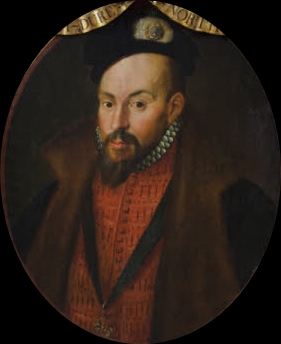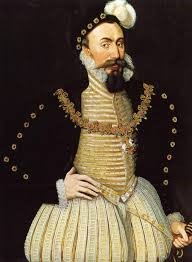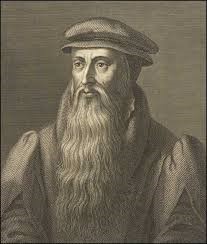William Cecil: Life Story
Elizabeth I’s Chief Councillor
Chapter 4 : Working with Northumberland
Cecil spent eight weeks in the Tower, although comfortably housed, and not subject to any mistreatment. He was released on 25 th January 1550, to find that the new man in charge was John Dudley, Earl of Warwick. Over the following year the power struggle between Somerset and Warwick continued. Cecil, reading the writing on the wall, abandoned his old master and began to work with Warwick.

On 5th September 1550, in a ceremony at Oatlands Palace, Cecil was given a place on the Privy Council as Secretary to the King. This was an important position, giving access to the monarch, and involving Cecil in all state business. He shared the office with Sir William Petre. Cecil also continued to work with in a more direct capacity for Warwick as his secretary.
As the impetus for Protestant reformation grew, the Privy Council became increasingly concerned about the non-compliance of the Lady Mary, the King’s half-sister and heir, to the 1549 Act of Uniformity. Mary refused to countenance any changes to the services laid down in the time of her father, on the stated grounds that, during the King’s minority, the Council had no power to change religion. It was widely known, however, that her objections were religious, rather than political. A number of attempts to force her to conform, by imprisoning her household officers had failed. Mary remained intransigent.
In August 1551, Mary received a letter in the King’s name. She received it very properly, kneeling and kissing the seal. But Mary had a sarcastic turn of phrase, and as she read it she commented aloud:
‘Ah, good Master Cecil took much pain here.’
Mary’s powerful cousin, the Emperor Charles V, intervened and secured permission for her to hear the traditional Mass, privately. Mary flagrantly abused this privilege, inviting all and sundry to her chapel, but the English government was not in a position to take action. Nevertheless, the drive for reform continued, and Cecil hosted a debate at his house in Canon’s Row, Westminster, during which five scholars, including Cecil himself, debated against the doctrine of transubstantiation (that Christ was really, physically, present in the bread and wine). Two men argued in favour of this Catholic interpretation.

Soon after this, on 11th October, 1551, Cecil was knighted in a ceremony at Hampton Court. This was also the occasion for Warwick to be promoted to Duke of Northumberland, making him of equal rank with Somerset. Henry Grey, Marquess of Dorset and the new Duke’s crony, was promoted to the Duchy of Suffolk. Tensions between Northumberland and Somerset continued. Cecil seems to have had little hesitation in supporting his new master, and, when Somerset was executed in January 1552, there were no repercussions for his erstwhile friend.
In August 1552, the powerful Scottish preacher, John Knox, arrived at the English Court, taken by Northumberland, who had heard him preach in Newcastle and appointed him as his chaplain. Cecil and Knox seem to have developed, if not a friendship, then at least a position of mutual respect.
Knox was at the radical end of Protestantism. He preached in front of Edward VI and Cranmer, Archbishop of Canterbury. What he had to say shook the court. Cranmer, persuaded by the types of argument and debate that Cecil had hosted, had revised the 1549 Prayer Book into a more Protestant version, clearly denying transubstantiation, but commanding Communicants to kneel as a sign of respect. Knox claimed this was idolatry, infuriating the Archbishop. Cranmer became even more enraged when a body of evangelical preachers was engaged by the Privy Council to review his Prayer Book – this included Knox.

Knox was invited to become Bishop of Rochester, but refused. Northumberland wrote to Cecil, explaining that, if Knox could be persuaded to accept, he would firstly, keep Cranmer on his toes, and secondly, stop preaching excessively radical doctrines in the North, and attracting crowds of Scots from over the border. Knox discussed the matter with Cecil, telling him that he would decline the bishopric.
Cecil refused to be Knox’s messenger, telling him would have to break the bad news personally. Northumberland was disgruntled, and told Cecil that
‘[he loved] not to have to do with men which be neither grateful nor pleasable…’
Cecil continued to correspond with Knox, and it is likely that Knox’s views on the necessity for reform in Scotland (still officially Catholic, and ruled by the Queen Dowager, Marie of Guise, as Regent for Mary, Queen of Scots, who was in France) influenced his views on Anglo-Scottish policy.
Cecil was also, perhaps, influenced by Knox’s announcement in January 1553, that there were secret traitors, just waiting for Edward VI to die, so that they could bring back Catholicism. Certainly, there were others who believed that for Mary to succeed would spell disaster, and so was born the scheme to change the succession from that laid down in the Act of Succession 1544.





